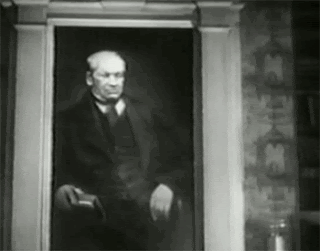 As longtime TotED readers know, I rarely review current movies here, but when I heard about Focus Features’ fact-based comedy-drama
Hyde Park on Hudson (HPoH), I didn't want to wait for the rest of the world to decide whether or not this film was a future classic! On Sunday, October 14th , 2012, I was lucky enough to attend a sneak preview in my hometown, New York City, at
Manhattan’s Florence Gould Hall. The stars, Bill Murray
as President Franklin Delano Roosevelt, and Laura Linney as Daisy Suckley,
surely need no introduction, being Oscar nominees themselves: Murray for Lost
in Translation (2003), and Laura Linney for The Savages (2007),
Kinsey (2004), and You Can Count on Me (2000), among their other
memorable films.
As longtime TotED readers know, I rarely review current movies here, but when I heard about Focus Features’ fact-based comedy-drama
Hyde Park on Hudson (HPoH), I didn't want to wait for the rest of the world to decide whether or not this film was a future classic! On Sunday, October 14th , 2012, I was lucky enough to attend a sneak preview in my hometown, New York City, at
Manhattan’s Florence Gould Hall. The stars, Bill Murray
as President Franklin Delano Roosevelt, and Laura Linney as Daisy Suckley,
surely need no introduction, being Oscar nominees themselves: Murray for Lost
in Translation (2003), and Laura Linney for The Savages (2007),
Kinsey (2004), and You Can Count on Me (2000), among their other
memorable films.In HPoH, distant cousin Daisy comes to Hyde Park in upstate New York (played by England) as a companion/assistant to Franklin. Her duties include helping to keep the extent of the 32nd President’s polio on the downlow; nobody wanted FDR to be shown as frail or helpless, especially with war looming on the horizon. Daisy tends to her aunt, too, which delighted me, because Auntie is played by Team Bartilucci favorite Eleanor Bron (Help!, Alfie; Two For The Road; Bedazzled — the original 1960s films, not the remakes from the early 2000s)!
 |
| Eleanor Bron as Daisy's Aunt |
But you all really want to talk about Bill Murray, don’t you? Sure, we all do! The New York Times’ Dave Itzkoff conducted the Q&A and Murray was a breezy, good-natured delight with both the interviewer and the questions from the enthusiastic audience. Quoting from Itzkoff’s intro: “WHAT do we still want from Bill Murray? His unpremeditated film career—in which he has parlayed performances as the happy-go-lucky heroes of 1980s-era slapstick into the existentially uncertain leading men of thoughtful comedies like Groundhog Day, Rushmore, and Lost in Translation—would seem to be sufficient. Yet we demand more from this 62-year-old actor, on whose rugged face a playful smirk and a contemplative gaze look equally at home, and he appears happy to give it to us in his life beyond the screen. Tracking his movements in the wild, as he crashes karaoke parties and kickball games, has become an online pastime; Mr. Murray himself has become the folkloric equivalent of a leprechaun or fairy godparent, popping up at unpredictable yet opportune moments.”
Murray’s amiable unpredictability has always been part of his charm. For example, as Itzkoff got to see first-hand while visiting NYC on the film’s behalf: “… Mr. Murray gave a journalist a front-row seat to see his carefree philosophy in action. Actually, closer: After Mr. Murray’s interview with another interrogator ran overtime, I was invited to accompany him to an evening appearance at Florence Gould Hall — and onto the stage of its theater, where a private chat turned into a public spectacle for a few hundred members of the Screen Actors Guild. (Imagine accompanying Mr. Murray on a version of the famous tracking shot from “Goodfellas,” through the back rooms and bowels of an unfamiliar building until the moment you expect to part ways and take your seat in the audience, only to realize then that you’re part of the act.) Murray apologized: “I’m sorry I went too long. I just feel badly when someone doesn’t have enough. Everyone wants to talk longer. Even I want to talk longer sometimes. And then I dig myself into holes I gotta get out of.”
Regarding feedback on his performance, Murray said, “I’m curious to see what people think of it, just ’cause it is not like an ordinary movie. I don’t know if it’s great or not. We’ll see what you get.” Indeed, he was genuinely surprised to be offered this iconic role at all: “I thought, ‘Can this guy be serious?’ I wouldn’t have cast myself. But this guy did, and about halfway through I went, ‘Wow, he really was right.’ Not to compare myself, but certain personality things were similar, like the way he tried to leaven things and move attention around a room, get everyone their little slice of the sun.”
 |
| Have you seen Bill Murray, baby, standing in the shadows? |
Murray wasn’t out to sully the real-life people involved, though. “The thing I was concerned about was: The story that we’re going to tell, is it going to be a tearing-down of an icon? I don’t know if I want to be part of that kind of action, where you trash someone. What was the John Travolta movie, Primary Colors? I didn’t want to do something where you were really just napalming someone.”
Itzkoff notes the joy Murray brings out of people when they encounter him, to which Murray smiles and says, “Some are more joyous than others. I’m of the habit that if there are people waiting outside the hotel, you don’t sign those autographs there. Because that means when you come back in the middle of the night, they’re still there. It’s usually a one-time thing. That’s it; that’s your one time. You try your hardest, but you can’t always be perfect.”
As he responds to this question, Murray brings Itzkoff with him onto an elevator, guiding him through a backstage area and onto the stage, where the expectant audience applauds rapturously. Even though these plans were surely explained to me ahead of time, the effect is one of dreamlike disorientation, followed by a deep breath and a tacit decision to follow Murray’s lead.
http://www.youtube.com/watch?v=m1mHtkpkxiA
Itzkoff says: “We were just talking about the joy you bring out of people. Do you believe it now?”
“Is this like the Oprah show?” Murray playfully replies. “Does everyone have a gift under their seat? You guys are pretty jazzed up.”
Murray reminisces about the first time he’d went to Wrigley Field in Chicago as a boy. “I was a big Cubs fan, and I watched all the games on TV, but when I grew up, TV was in black and white. So when I was 7 years old, I was taken to my first Cubs games, and my brother Brian said, ‘Wait, Billy,’ and he put his hands over my eyes, and he walked me up the stairs. And then he took his hands away.” Choking up, Murray continues, “And there was Wrigley Field, in green. There was this beautiful grass and this beautiful ivy. I’d only seen it in black and white. It was like I was a blind man made to see. It was something.”
There seems to be so much serendipity in Murray’s life that Itzkoff couldn’t help but ask whether he’s actively cultivating these moments, or just hoping that they come to him. “Well, you have to hope that they happen to you. That’s Pandora’s box, right? She opens up the box, and all the nightmares fly out. And slams the lid shut, like, “Oops,” and opens it one more time, and hope pops out of the box. That’s the only thing we really, surely have, is hope. You hope that you can be alive, that things will happen to you that you’ll actually witness, that you’ll participate in, rather than life just rolling over you. Life rolls along, and holy cats, you wake up and it’s Thursday, and what happened to Monday? Whatever the best part of my life has been, has been as a result of that remembering.
Everyone has days where you wake up and think: “Nothing good has come to me in a little while. I’d better prime the pump’? Well, who hasn’t woken up thinking, “God, nothing good has come to me in a while,’ right? When I feel like I’m stuck, I do something—not like I’m Mother Teresa or anything, but there’s someone who’s forgotten-about in your life, all the time. Someone that could use an ‘Attaboy’ or a ‘How you doin’ out there?’ It’s that sort of scene, that remembering that we die alone. We’re born alone. We do need each other. It’s lonely to really effectively live your life, and anyone you can get help from or give help to, that’s part of your obligation.”
Even today, Murray is pleasantly surprised that the roles that he’d done years ago, if not decades ago, still endure. “When you did the job, you thought you were just trying to amuse your friends who are all on the job. I’m just trying to make the sound guy laugh, the script supervisor. Take a movie like Caddyshack, I can walk on a golf course, and some guy will be screaming entire scenes at me and expecting me to do it word for word with him. It’s like: ‘Fella, I did that once. I improvised that scene. I don’t remember how it goes.’ But I’m charmed by it. I’m not like, ‘Hey, knock it off.’ It’s kind of cool.”
 |
| Eleanor Bron from A Little Princess, because it's a better pic of her :-) |
Murray continues to be pleasantly surprised that the lessons he learned back in Second City would pay off later in life. “It pays off in your life when you’re in an elevator and people are uncomfortable. You can just say, ‘That’s a beautiful scarf.’ It’s just thinking about making someone else feel comfortable. You don’t worry about yourself, because we’re vibrating together. If I can make yours just a little bit groovier, it’ll affect me. It comes back, somehow.”
Hyde Park on Hudson is currently in limited release, and will be in wide release in January 2013!
Until then, check out these fun tidbits about the film, courtesy of Focus Features! Here's the link:
http://focusfeatures.com/hyde_park_on_hudson



.jpg)




































